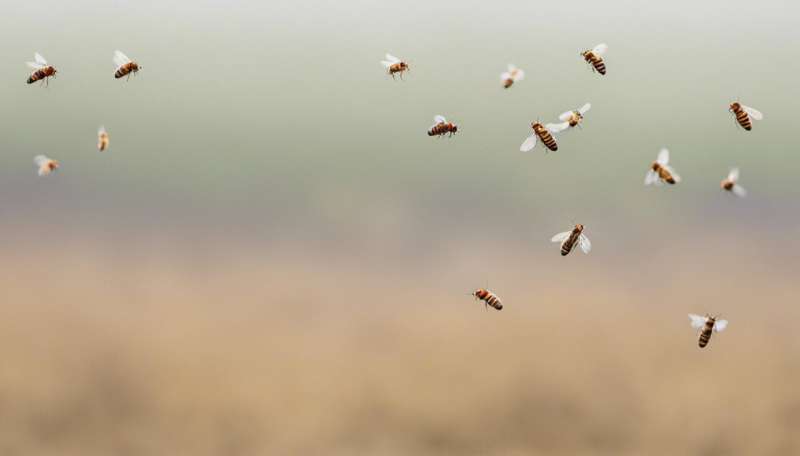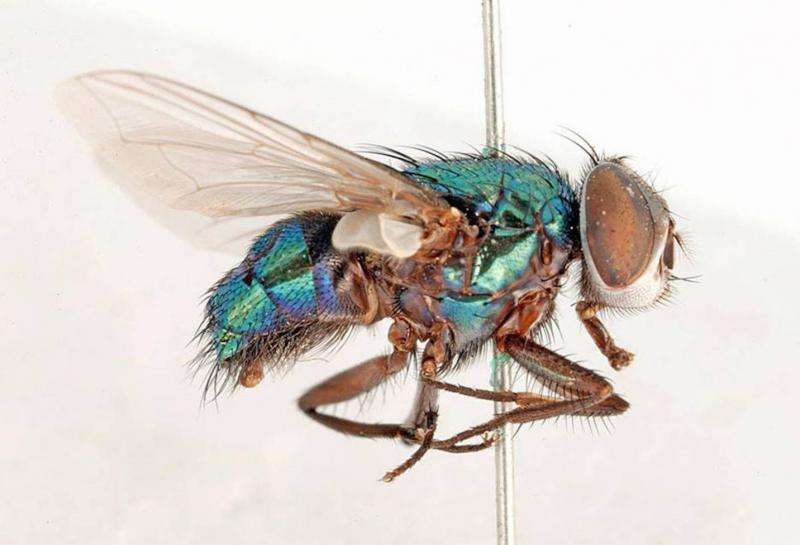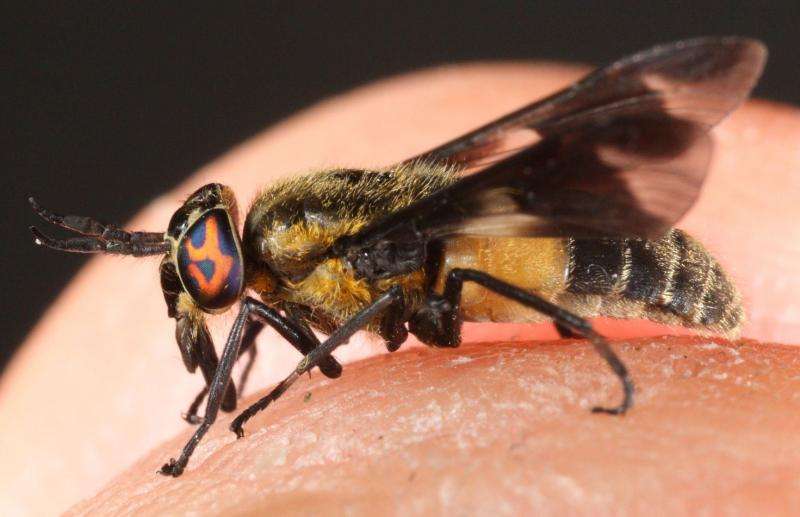Buzz, buzz, slap! Why flies can be so annoying

You know the drill. A picnic in the park, a walk in the bush or a barbecue with friends and family – all perfect summer activities that can be ruined by annoying flies that never leave you alone.
So why do they do it and what do they want?
Flies are one of the most diverse insect orders, with more than 150,000 species described worldwide in more than 150 different insect families.
In Australia, entomologists (scientists who study insects) estimate there are more than 30,000 species of fly, and yet only 7,700 species have been described.
There are two main types of fly: the Nematocera (which includes mosquitoes and non-biting crane flies) and the Brachycera (which includes house flies, fruit flies, and horse flies).
In Australia, there is only one type of fly that's attracted to us, rather than our blood: the bush fly (Musca vetustissima, Diptera: Muscidae), which is a non-biting fly and close relative of the house fly (Musca domestica). These flies are after the proteins, carbohydrates, salts, and sugars naturally present on your skin.
All the other flies around you are probably after your blood, and that includes mosquitoes and horse flies. And yes, unfortunately some people are more attractive to mosquitoes than others.

Although mosquitoes and other blood-feeding insects are attracted to the carbon dioxide we exhale, we know the insect sensory system also helps find exposed skin. Since the skin near our faces is often exposed, that's one reason flies are always buzzing around your face and hands.
Mouthparts with bite
In the mosquito, the proboscis is sharp and needle-like; in the deer fly (also known as the horse fly, or march fly in Australia), it is a large, wide spike.
This reflects the different feeding styles found in flies: mosquitoes use a hypodermic needle approach, and are so selective about where they bite research has shown they can actually find capillaries underneath the skin.
As most people know, these bites can be very itchy and in rare cases the proteins transferred during a mosquito bite can cause anaphylactic shock.

Horse flies use a "slash and suck" approach, where they cut the skin and then lap up the blood that comes out. These bites are my least favourite of any insect.
Biting midges, also known as sandflies in Australia, are blood-feeding flies (Diptera: Ceratopogonidae), and are known vectors of lesser human pathogens and major veterinary pathogens in livestock. Their bites are also intensely itchy.
Fruit flies and house flies use a slightly different method: their mouthparts are like sponges, and they regurgitate a mixture of digestive enzymes onto the surface they're feeding on and then lap up the resulting liquid. Although they are irritating, they don't bite humans.
Along for the ride
The biggest problem with fly bites isn't so much that the injury is painful or irritating, it's the pathogens the insect can transmit through their bite. In order for a vector-borne disease to spread, three things need to be present:
- the disease
- the insect that spreads the disease
- the vertebrate host.
For some diseases, such as dengue fever, in Australia we have the mosquito but generally don't have the virus. Outbreaks of dengue occur when someone brings the dengue virus into the country, and then the mosquitoes that are already here can spread the disease.
When you look at the number of notifications for dengue virus infection, you can see that Queensland has the highest number of cases.
But when you factor in the population size, how does that change? When you look at the number of notifications per 100,000 people in the population, the tropical areas of Australia (the Northern Territory, Western Australia, and Queensland) are by far the most at risk. That's because those areas are where you're most likely to have the disease, the insect that spreads the disease, and humans.

Humans vs flies
How can you reduce your risk of being bit? DEET or picaridin containing topical insect repellents work best to stop mosquitoes from biting. Wristbands have been shown not to repel mosquitoes, and botanicals rarely if ever provide the same level of protection.
For nuisance flies this may not matter, but for those insects that can carry human disease your best method is to remove all the standing water from around your house (to prevent eggs from developing there), and stay inside when you are able at dusk (to prevent being bit when the mosquitoes are most active).
Most blood feeding flies, like mosquitoes, take opportunistic blood meals to complete their lifecycle. The blood meal is required in order for females to lay eggs. In several species of mosquito, females aren't selective and will take their blood meals from a range of vertebrates.
Adult males and sometimes females feed only on nectar or pollen. In tabanids like horse flies, nectar feeding occurs frequently in both males and females.
When flies land on a series of plants to feed on nectar, they spread the pollen between flowers and help fertilise the next generation of plants. As pollinators, flies perform a valuable role in the ecological community for our native plants, and are also helping farmers.
Recent research from scientists in Australia has shown that non-bee pollinators, including flies, play an important role in crop pollination across the world.
So next time flies flood your picnic, bushwalk or barbecue, consider that they may have helped put some of that food on your table.
Source: The Conversation
This story is published courtesy of The Conversation (under Creative Commons-Attribution/No derivatives).
![]()



















